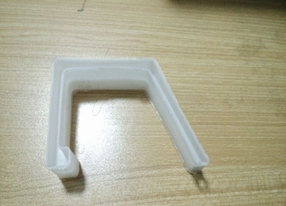Floating Fish Feed Production Equipment Supplier for Aquaculture Industry Solutions
Dec . 10, 2024 23:59 Back to list
Floating Fish Feed Production Equipment Supplier for Aquaculture Industry Solutions
The Importance of Floating Fish Feed Plants in Aquaculture
As the global population continues to rise, so does the demand for sustainable food sources. Aquaculture, or the farming of fish and other aquatic organisms, has emerged as one of the most promising solutions to meet this increasing demand. Central to this industry is the production of high-quality fish feed, particularly floating fish feed, which has unique characteristics that set it apart from traditional feed types. This article explores the significance of floating fish feed plants, the processes involved in their operation, and the key manufacturers leading the industry.
Understanding Floating Fish Feed
Floating fish feed is specifically designed to float on the water's surface, allowing fish to feed more naturally. This type of feed is essential for the efficient farming of species like tilapia, catfish, and trout, which tend to feed near the surface. The buoyancy of floating feed also helps aquaculture operators monitor feeding behavior, reduce feed waste, and improve feed conversion ratios. Floating fish feed is typically manufactured from a mixture of fish meal, plant proteins, vitamins, and minerals, which are extruded into pellets that maintain their structure and nutritional value when submerged in water.
The Role of Floating Fish Feed Plants
The manufacturing process of floating fish feed is complex and requires specialized machinery and expertise. Floating fish feed plants are responsible for the entire production process, from the raw material selection to the final extrusion. These plants employ advanced technology to ensure the feed is nutritionally balanced, palatable, and environmentally sustainable.
Key equipment in a floating fish feed plant includes grinders, mixers, extruders, and dryers. The production process typically begins with grinding the raw materials into a fine powder. This powder is then mixed with water and other ingredients to create a uniform dough-like consistency. The mixture is passed through an extruder, where it is subjected to high temperature and pressure. This critical step not only shapes the feed but also denatures anti-nutritional factors in the ingredients, enhancing digestibility. Finally, the extruded pellets are dried to achieve the desired moisture content, ensuring they remain buoyant and stable in water.
floating fish feed plant manufacturer

Leading Manufacturers in the Industry
The success of the aquaculture industry is closely linked to the efficiency and innovation of floating fish feed plant manufacturers. Some key players in this sector are renowned for their technological advancements and commitment to sustainability. Companies like Bühler, Skretting, and Cargill are pioneering the development of high-quality floating fish feed, catering to the diverse needs of fish farmers.
Bühler, with its extensive experience in feed production technology, emphasizes the importance of quality control and traceability in its manufacturing processes. Skretting stands out for its focus on research and development, offering tailored feed solutions that enhance fish growth and health. Cargill, a global leader in agriculture, combines expertise in feed formulation with sustainable sourcing practices to minimize the environmental impact of its operations.
The Future of Floating Fish Feed Plants
The future of floating fish feed plants looks promising as they adapt to the evolving needs of the aquaculture industry. With the increasing importance of sustainability, manufacturers are exploring alternative protein sources, such as insects and algae, to reduce reliance on traditional fish meal. Additionally, advancements in technology, such as artificial intelligence and automation, are optimizing production processes, maximizing efficiency, and minimizing waste.
In conclusion, floating fish feed plants play a crucial role in the aquaculture industry by providing high-quality, sustainable feed for fish farming. As global demand for seafood rises, the continuous innovation and improvement in feed production will be essential to ensure the growth and viability of aquaculture. With leading manufacturers pioneering new solutions, the future of floating fish feed plants is poised for significant advancements that will benefit both producers and consumers alike.
-
Hot Sale 24 & 18 Door Rabbit Cages - Premium Breeding Solutions
NewsJul.25,2025
-
Automatic Feeding Line System Pan Feeder Nipple Drinker - Anping County Yize Metal Products Co., Ltd.
NewsJul.21,2025
-
Automatic Feeding Line System Pan Feeder Nipple Drinker - Anping County Yize Metal Products Co., Ltd.
NewsJul.21,2025
-
Automatic Feeding Line System - Anping Yize | Precision & Nipple
NewsJul.21,2025
-
Automatic Feeding Line System - Anping Yize | Precision & Nipple
NewsJul.21,2025
-
Automatic Feeding Line System-Anping County Yize Metal Products Co., Ltd.|Efficient Feed Distribution&Customized Animal Farming Solutions
NewsJul.21,2025






